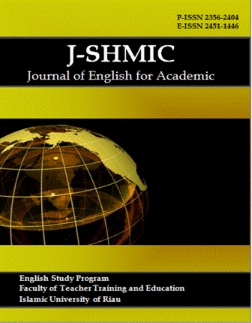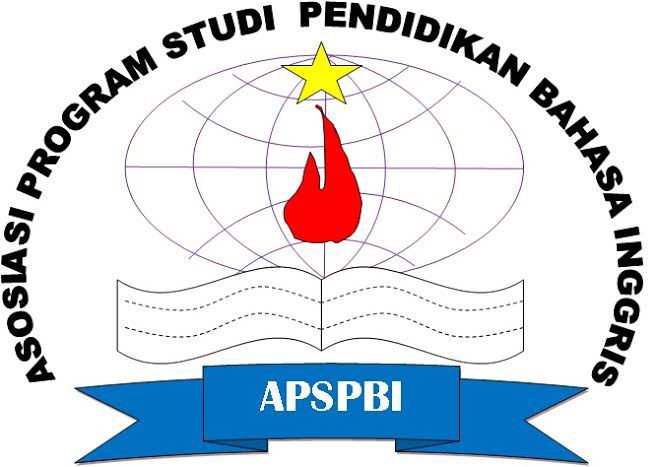An Analysis of the Students’ Writing Skill in Hortatory Exposition Text at the First Semester of Public Administration Study Program of the Faculty of Social and Political Science
Keywords:
Writing skill, hortatory exposition text, writing difficulties.Abstract
This research aimed to describe the students’ difficulties in writing Hortatory Exposition Text and describe the students’ scores in writing Hortatory Exposition Text. The research was descriptive qualitative research. It was conducted at the first semester of Public Administration Study Program of the faculty of Social and Political Science Universitas B. The population of this research was 40 students of the first semester of Public Administration Study Program of the Faculty of Social and Political Science Universitas B. Simple random sampling was applied to select the sample. The researcher took 3 participants consisting of one low, one medium, and one high student based on English language proficiency level. In collecting the data, the researcher used test, observation, and interview. In analyzing the data, the researcher used a flow model. The result of the research showed that the low-level student (PE) got the lowest score, and the high-level student (JN) got the highest score. In addition, the aspects of writing the students had the most difficulties in were organization, unity, coherence, sentences, and paragraphs.
Downloads
References
Harris, D. P. (1969). Testing English as a Second Language. McGraw-Hill: New York.
Harris, R. (2000). Rethinking writing. International Journal of Applied Semiotics, 4(2), 131-132.
Haswell, R. H. (2007). Researching teacher evaluation of second language writing via prototype theory, retrieved March 6, 2020, from http://www.writing.ucsb.edu/wrconf08/Pdf_Articles/Haswell-Article.pdf.
Husein, R. & Pulungan, A. H. (2017). Sumber Belajar Penunjang PLPG 2017 Mata Pelajaran/Paket Keahlian Bahasa Inggris BAB X Hortatory Exposition. Kementerian Pendidikan dan Kebudayaan Direktorat Jenderal Guru dan Tenaga Kependidikan.
Mahu, D. P. (2012). Why is learning english so beneficial nowadays? International Journal of Communication Research, 2(4), 374 – 376.
Meyers, T. (2005). (Re)writing Craft: Composition, Creative Writing, and the Future of English Studies, Pittsburgh, PA: The University of Pittsburgh Press.
Miles, M. B. & Huberman, A. M. (1994a). Qualitative data analysis: An expanded sourcebook (2nd ed.). Thousand Oaks, CA: Sage.
Oshima, A. & Hogue, A. (1998). Writing Academic English. (3rd ed.). New York: Pearson Education.
Pratiwi, K. D. (2015). Students’ difficulties in writing English. Al-Lughah Jurnal Bahasa.
Pretty, W. T. & Jensen, J. M. (1980). Developing children’s language. Boston: Allyn & Bacon, Inc.
Reddy, M. S. (2016). Importance of english language in today’s world. International Journal of Academic Research, 3(2), 179 – 184.
Tarigan, H. G. (1994). Menulis Sebagai Suatu Ketrampilan Berbahasa. Bandung: Angkasa.
Ur, Penny. (1988). English Language Teaching Theory and Practice. Cambridge: Cambridge University Press.
Urquhart, V. & McIver, M. (2005). Teaching Writing in the Content Areas. MA: Association for Supervision and Curriculum Development.
Usman, H. & Akbar, P. S. (2017). Metodologi Penelitian Sosial (3rd ed.). Jakarta: Bumi Aksara.
Yin, R. K. (2009). Case study research: Design and methods (4th ed.). Thousand Oaks, CA: Sage.
Published
How to Cite
Issue
Section
This is an open-access article distributed under the terms of the Creative Commons Attribution-ShareAlike 4.0 International License which permits unrestricted use, distribution, and reproduction in any medium. Users are allowed to read, download, copy, distribute, search, or link to full-text articles in this journal without asking by giving appropriate credit, providing a link to the license, and indicating if changes were made. All of the remixes, transform, or build upon the material must distribute the contributions under the same license as the original.











